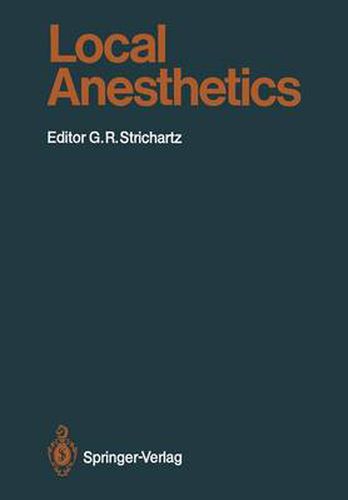Readings Newsletter
Become a Readings Member to make your shopping experience even easier.
Sign in or sign up for free!
You’re not far away from qualifying for FREE standard shipping within Australia
You’ve qualified for FREE standard shipping within Australia
The cart is loading…






This title is printed to order. This book may have been self-published. If so, we cannot guarantee the quality of the content. In the main most books will have gone through the editing process however some may not. We therefore suggest that you be aware of this before ordering this book. If in doubt check either the author or publisher’s details as we are unable to accept any returns unless they are faulty. Please contact us if you have any questions.
Local anesthetics are among the most widely used drugs. Their development over the past century ranges from a documented influence on Freud’s Interpretation of Dreams 1 to the synthesis of the ubiquitously popular lidocaine, as described in Chapter 1. For surgical procedures the use of regional, epidural and intrathecal local anesthesia has increased continuously during the past decade. Local anesthetics are also applied by physicians to ameliorate unpleasant sensations and reactions to other procedures, such as tracheal intubation. The presence or the threat of cardiac arrhythmias is often countered by chronic administration oflocal anesthetic-like agents, such as lidocaine or procainamide. Relief of acute pain, accompanying dental manipulations, for example, and of chronic pain are also accomplished with traditional local anesthetics. And over-the-counter formula tions of topical local anesthetics provide practitioners of solar indiscretion welcome relief from their otherwise unaccommodating sunburn. In all these applications the final effect of the local anesthetic is an inhibition of electrical activity, accomplished as a reduction or total blockade of action potentials. The primary site of action is the sodium channel, a transmembrane protein which is essential for the influx of sodium ions that subserves impulse generation and propagation in nerves, skeletal muscle, and heart. The detailed mechanisms oflocal anesthetic action are still being investigated and Chapter 2 of this volume provides a current overview of that subject.
$9.00 standard shipping within Australia
FREE standard shipping within Australia for orders over $100.00
Express & International shipping calculated at checkout
Stock availability can be subject to change without notice. We recommend calling the shop or contacting our online team to check availability of low stock items. Please see our Shopping Online page for more details.
This title is printed to order. This book may have been self-published. If so, we cannot guarantee the quality of the content. In the main most books will have gone through the editing process however some may not. We therefore suggest that you be aware of this before ordering this book. If in doubt check either the author or publisher’s details as we are unable to accept any returns unless they are faulty. Please contact us if you have any questions.
Local anesthetics are among the most widely used drugs. Their development over the past century ranges from a documented influence on Freud’s Interpretation of Dreams 1 to the synthesis of the ubiquitously popular lidocaine, as described in Chapter 1. For surgical procedures the use of regional, epidural and intrathecal local anesthesia has increased continuously during the past decade. Local anesthetics are also applied by physicians to ameliorate unpleasant sensations and reactions to other procedures, such as tracheal intubation. The presence or the threat of cardiac arrhythmias is often countered by chronic administration oflocal anesthetic-like agents, such as lidocaine or procainamide. Relief of acute pain, accompanying dental manipulations, for example, and of chronic pain are also accomplished with traditional local anesthetics. And over-the-counter formula tions of topical local anesthetics provide practitioners of solar indiscretion welcome relief from their otherwise unaccommodating sunburn. In all these applications the final effect of the local anesthetic is an inhibition of electrical activity, accomplished as a reduction or total blockade of action potentials. The primary site of action is the sodium channel, a transmembrane protein which is essential for the influx of sodium ions that subserves impulse generation and propagation in nerves, skeletal muscle, and heart. The detailed mechanisms oflocal anesthetic action are still being investigated and Chapter 2 of this volume provides a current overview of that subject.